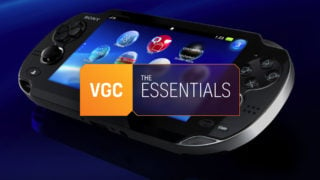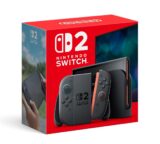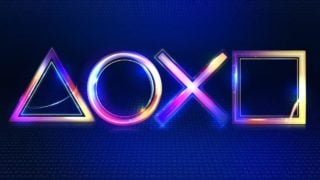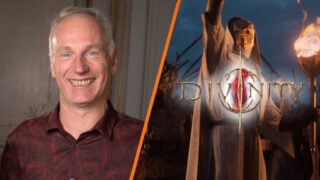The story of PS2, Sony’s crowning achievement
Ahead of PS5, we revisit how PS2 broke the second-console curse
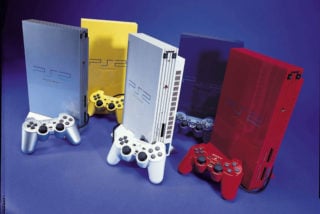
As attention turns to PlayStation 5, VGC is looking back on the history of PlayStation and the defining moments of one of gaming’s most important companies.
Further reading:
The second console curse
For nearly three decades, no console manufacturer had ever truly dominated two console cycles back-to-back. Whether because of inevitable complacency, the market’s inherent demand for originality or some sort of corporate curse, whenever a console manufacturer had dominated the market it always seemed to decline the second time around.
Super Nintendo had come close to replicating the huge success of NES, but ultimately lost market share and sold less consoles in every territory compared to its predecessor.
In 1995, before even the original PlayStation had set the gaming market ablaze, PlayStation Europe president Chris Deering was already determined to beat the second-console curse.

“From day one on PS1, I started thinking about what I would do to make sure PS2 could win round two,” Deering told Eurogamer in a 2010 interview. “Nintendo and SEGA had never won two in a row. We used to say it was like winning two gold medals in two back-to-back Olympics – it just never happened. So I set that as a personal goal.”
Jack Tretton, who was heading up PlayStation’s US business, shared a similar sentiment with GI.biz: “Going into PlayStation 2, we were certainly confident, but we were also cautious because it was very rare that the leader of one generation could hold that position in the next. There was a great deal of trepidation not to get caught up in our success and to make sure that we redoubled our efforts going into the next generation.”
A Sign of Change
In March 1999, Sony’s lavish PlayStation Meeting was unrecognisable compared to the modest, developer-focused unveiling of its maiden console five years prior.
For Sony’s second gaming machine, some 1,500 journalists had assembled at Tokyo’s International Forum for a lavish ceremony laced in pomp and pageantry. For the press assembled in the deluxe concert hall, Sony did not disappoint. Although no console was shown and even its name wasn’t decided, a string of impressive – and arguably, slightly misleading – tech demos provided more than enough material for journalists to fill their columns.
A press release issued the same day was almost as bold as Sony’s tech demos, proclaiming that the firm had announced “the development of the World’s Fastest Graphics Rendering Processor,” which it said would be capable of rendering images “comparable to movie-quality 3D graphics in real time”.
But perhaps the most significant moment of the PS2’s unveiling came when Sony president Norio Ohga took to the stage to speak of his pride at attaching the company’s name to PlayStation.
The speech showed how far the PlayStation business had come since the early PS1 days, when Sony famously refused to have its name attached to the console, in case its risky trip into the games industry sullied its venerable, 50-year-old brand, and many execs even tried to dissuade the business from building a games device at all.
Over 50 million console sales had since put those concerns to bed (and that figure would go on to double), and by ’99 PlayStation was one of the top earning divisions in the company, accounting for a quarter of all operating profits that fiscal year.
In a further demonstration of PlayStation’s remarkable rise within Sony, just one week after the PlayStation Meeting the company announced that it was intending to shed 10 percent of its work force in a significant corporate shakeup, with PlayStation shifted to the heart of its operation.
Ken Kutaragi, once branded as a pariah within Sony, told the New York Times at the time: ”I don’t feel any different than I did before we made the announcement. ‘We’re just going to be forced to educate the Sony Corporation a bit.”
Power and Emotion
Years before Kutaragi’s eventual downfall caused by his high-stakes engineering style, the Father of PlayStation was already taking gambles with PlayStation 2’s architecture. On April 1, 1999 Sony and Toshiba formed a separate company specifically to mass-produce the PS2’s powerful new processor, the Emotion Engine.
The new company – 49 percent owned by Sony Computer Entertainment – would be based in Nagasaki Prefecture and produce the new console’s CPU, an innovative chip designed specifically for game design. Emotion Engine was one of Kutaragi’s proudest creations, and he wanted to avoid any supply issues, like those experienced by Sega and NEC months earlier.
So important was Emotion Engine to Kutaragi, and so great had his influence grown within Sony as a whole, that the corporation was persuaded to put aside more than $1 billion to produce the chips for the first two years.

Then-Worldwide Studios boss Phil Harrison described the concept behind Emotion Engine in 2012: “The idea Kutaragi and his team of engineers established was that the CPU would be capable not just of number-crunching, but of delivering the kind of mathematical capability required to simulate emotion.
“That was a very wide and lofty goal and I don’t think we realised it in quite the way we planned. But it was the start of a process where you changed the way games were developed, inside the code, to be more believable.”
Emotion Engine was impressive for two reasons; one, it excelled at “floating-point performance,” which helped it handled complex graphics. Secondly, it was able to handle 6.2 gigaflops at 300MHz, which made it two times faster than the leading PC processor of the day.
Harrison recalled attending a silicon chip conference in San Francisco where Sony’s engineers presented the Emotion Engine in the form of an academic paper. The chip experts in attendance either believed the architecture was far too complicated to manufacture, or dismissed it entirely as a work of fiction.
“Ken proved everybody wrong,” Harrison said. “You could build it, and you could build it in volume. That was the moment Sony Computer Entertainment went from being just a games company to becoming a major global player in silicon chip design.”
The Movies
In September 2019, Ken Kutaragi unveiled the PS2 console design to widespread acclaim. With its slick, black appearance and gorgeous, angular shape, PS2 was so impressive it caused European executives to frantically contact their colleagues in the morning hours to share their excitement.
However, lurking behind the plastic was a crucial new feature that some executives would not come to appreciate until years later: the PS2’s DVD drive. With a launch price of $299, the PlayStation 2 was significantly cheaper than any DVD player on the market at the time, meaning Sony suddenly had a significant selling point beyond its tentpole gaming functionality.
DVD turned out to be huge for PS2’s early years and is widely credited for moving the games console out of bedroom and into the living room. However, SCE’s then UK boss Ray Maguire claimed the console was sold as a games device first.
“We didn’t particularly centre on [the DVD player] because it wasn’t a core function,” Maguire told GI. “It was a feature and we mentioned it, but we didn’t spend too much money on that because we were spending for the games. It’s the games that were the real hook.”
Meanwhile, Europe president Deering said that PS2 was specifically sold for its DVD functionality in parts of Southern Europe to great effect.
“We really pushed PS2 as a DVD player almost on an equal footing with it being a game machine in Southern Europe,” Deering said. “Of course, once it got under the TV then people started buying games. But it got under the TV to play movies, certainly in Spain, which wasn’t a big video game country until PlayStation and PS2 doubled the total penetration of homes with consoles.”
The Third Place
With a hit games console under its belt, SCE approached PlayStation 2 with a confidence and swagger that wasn’t present for its previous launch, and this mood was reflected in some of the firm’s boldest and most iconic marketing ever.
Whereas the original PlayStation had been targeted at a broad audience including kids and families, for PS2 Sony wanted to target a mature audience from the start, further differentiating itself from rival Nintendo.
After more than a year of ad agency research, this mission led to the hiring of surrealist director David Lynch for PS2’s infamous ‘Third Place’ launch advert, which was shot in Los Angeles over a two day period.
“PlayStation became a very aspirational brand,” explained PlayStation’s then marketing boss David Wilson. “If you understood the symbols you were cool, and if you didn’t you weren’t. There was a lot of out-there ideas for the launch of the PS2. I think the Third Place adverts were essentially the embodiment of all of them. They were just super-cool. Real landmark stuff for the games business.
“These types of adverts were more about the experience than the product. It was about how you felt about PlayStation.”
The One Million Weekend
On March 4, 2000, PS2’s Japanese launch was a chaotic, triumphant success, with unprecedented demand seeing Sony sell out of all one million launch units in a single weekend.
According to one local newspaper, more than 10,000 people queued across Tokyo on launch day, some of whom had started waiting four days earlier.
Weeks before that, the PlayStation website had crashed the same minute pre-orders for the system officially opened. Most had already sold out via pre-order, but some stores offered units on a first-come, first-served basis.

In Akihabara, many black-market vendors are said to have acquired consoles to sell on eBay at upwards of $2,000 each, with one PS2 reportedly sold for $11,000. There were also reports of customers having their PS2 consoles stolen on launch night, so valuable had they become on the black market.
PS2 was available alongside 11 launch titles, including Ridge Racer V and Tekken Tag Tournament.
Reflecting on the launch in 2018, then-Worldwide Studios boss Shuhei Yoshida admitted that “we were awfully unprepared” when it came to launching the console. “Because of the fast transition between PS1 and PS2, we had no idea how the industry manages these things,” he said.
Yoshida added that because hardly any games were available at launch, much of the early demand was for PS2’s capabilities to play DVDs. “It was really a success from the start, the PS2 sold like crazy,” said Yoshida. “But when it launched in Japan, the best-selling software was actually the Matrix DVD.
“DVD was catching on but was still a very expensive system, and the PS2 came out with the same high quality DVD player capability with much lower, disruptive pricing.”

PlayStation 2 wouldn’t arrive in the West until the end of 2000, by which time it had already sold three million units in just five months in Japan. The incredible demand for the console meant Sony had to halve its North American allocation to 500,000 units, meaning even some pre-orders couldn’t be fulfilled.
In Europe the situation was even worse. After it emerged that the promised 200,000 units might not arrive in time for Christmas, PlayStation Europe hired a Russian Antonov aircraft – usually used for moving tanks to Afghanistan – to fly to Japan and bring PlayStations back to the UK.
PS2 went on the sell some 155 million units, making it the most successful home console of all-time.



